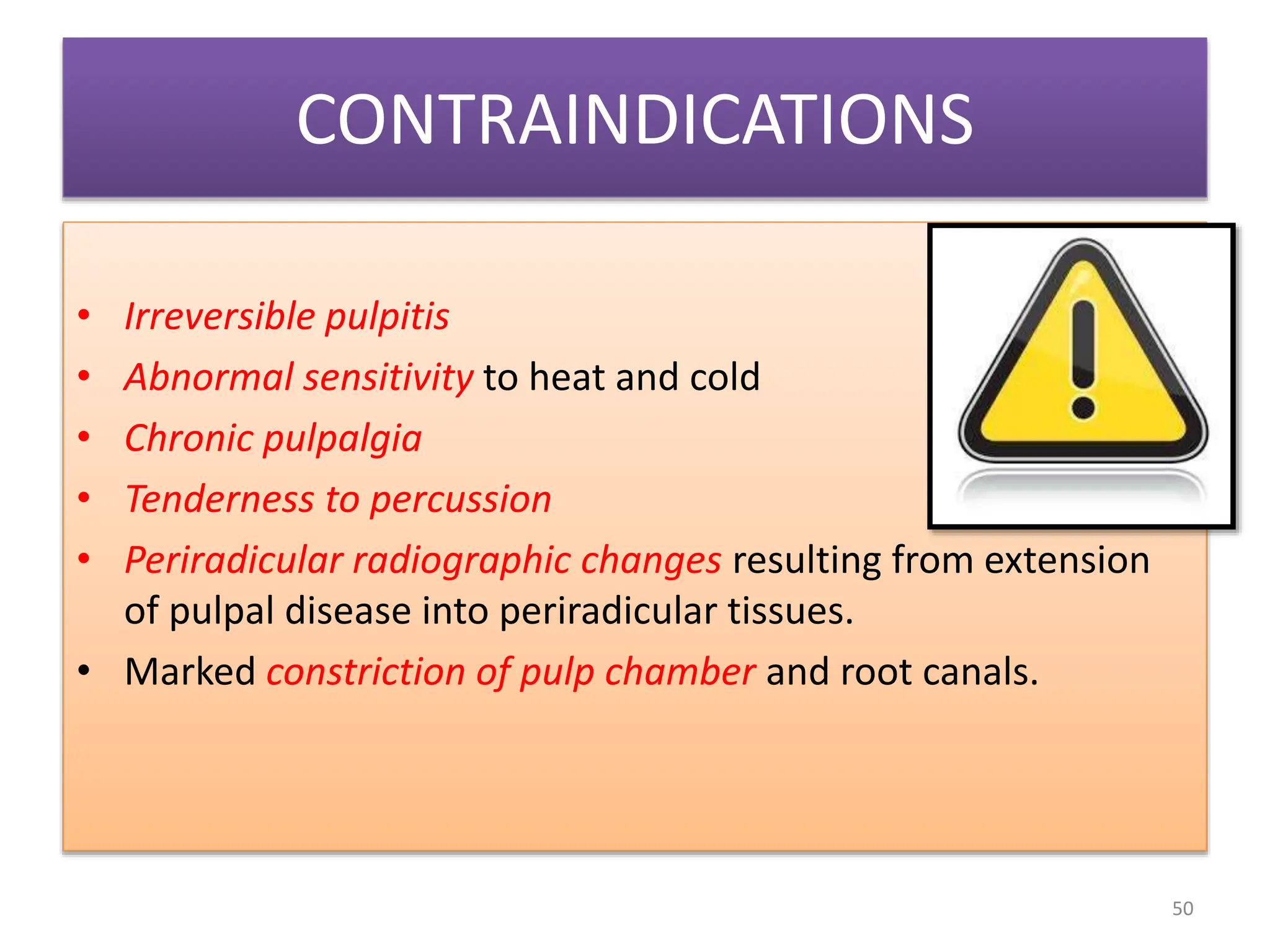This document discusses various vital pulp therapies including direct and indirect pulp capping. Indirect pulp capping involves covering the deepest layer of remaining carious dentin with a biocompatible material to prevent exposure and further trauma to the pulp. It aims to arrest the carious process and allow reparative dentin formation. Direct pulp capping places a protective material directly over an exposed pulp to maintain its vitality. Materials used include calcium hydroxide and MTA, with each having their own application technique. Factors like exposure size and timing influence the prognosis of direct pulp capping. Maintaining a sterile, adhesive seal over the exposed site is important for treatment success.






































































































